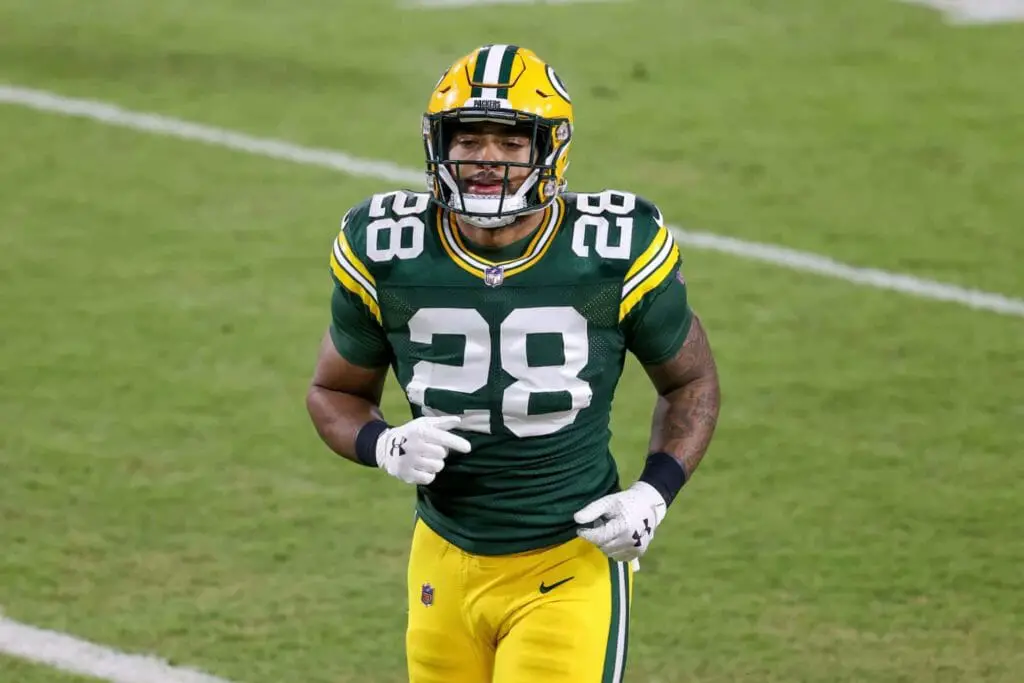Now that we’ve established the definition of Dynasty fantasy football in Part 1, there are a number of areas to consider when starting or joining a league. For Part 2 of the 4 part intro series, let’s focus on size.
Particularly in Dynasty, commissioners like to be original in the settings they create – sometimes to a fault. Aspects like roster positions, roster size and general league size are some of the most dramatic of all. The more Dynasty league owners you talk to, the more you realize some of the nuances between all the leagues out there.
LEAGUE SIZE – TOO SMALL
Truth be told, determining the amount of owners in your league can be a little tricky. It’s rare to see an eight or 10 team Dynasty league. Normally these size leagues are for beginner owners who participate in redraft leagues. The waiver wire and drafts are typically overflowing with top tier players, making strategy nearly obsolete. It doesn’t mean you can’t start at this low of a number for your league. Adding more owners down the road is an option. However, that gets tricky in regards to how you would divvy out players to the new expansion squads.
LEAGUE SIZE – TOO BIG
On the higher end, anything that involves 16 or more owners is really stretching it thin. We will get to the concept of roster size in a minute, but if there are, let’s say, 20 players per roster for a 16 team league, that’s 320 total players. Your free agent pickups will probably be the likes of Dante Pettis or CJ Prosise, which is basically throwing in the towel on your fantasy season.

It’s natural to think the more owners in the league, the better. One of fantasy football’s biggest challenge comes from scraping the bottom of the barrel for players who will positively impact your squad. But there has to be a limit. I always thought the more owners in a league, the more committed they will be. That’s actually not the case. You are now relying on even more people to be dedicated to fantasy football for the entire calendar year. Owner’s may have good intentions to start, but maybe a couple down seasons makes them lose interest, and then a chain reaction of bad ownership starts to occur.
You will have your outliers, where somehow, an 18, 20 or even 24 team league has been run successfully. Those are rare. These types of leagues thrive on being different, whether it’s with roster construction, roster size, drafts, and/or waiver wire pickups.
LEAGUE SIZE – JUST RIGHT
There’s a sweet spot, though. Either a 12 or 14 team Dynasty fantasy football league seems like the best fit. This way, the free agent pool is still ripe for picking, injuries to a starter won’t necessarily derail an owner’s season, rookie and free agent drafts will be even more worthwhile to all owners, and the odds of having consistent bottom dwelling teams will diminish.
Plus, scheduling-wise it makes sense. You can split 12 teams into three divisions of four teams. You play everyone in your division twice. Rivalries will organically appear as a result. Yes, there’ll be one random opponent in the league an owner won’t play, but that’s a sacrifice worth making. And in the end, it isn’t a big deal.
For 14 team leagues, you can split it into two divisions of seven if you so choose. Basically, every owner plays each other once in the regular season (13 weeks). It’s easier to rely on this amount of owners to be invested in their year-round squad.
[pickup_prop id=”4749″]
ROSTER POSITIONS
Originally I wanted to talk about roster size next, but honestly, it doesn’t make sense without discussing roster positions first. If you are starting or joining a Dynasty league, this is an important factor in relation to roster construction. It will most certainly impact draft strategy, trades, and waiver pickups, among other things.
ROSTER POSITIONS – STANDARD
The standard, most popular industry lineup includes: one quarterback, two running backs, two wide receivers, one tight end, one kicker, one defense/special teams, and one Flex (RB/WR/TE). This makes a nine player starting lineup. I’ve been directly and indirectly associated with a number of Dynasty leagues, and not one of them uses this standard lineup. My guess is, since Dynasty football is a unique in itself, commissioners want to make their league settings unique as well.
ROSTER POSITIONS – OTHER OPTIONS
A somewhat newer trend, especially in Dynasty fantasy football, is using the Superflex, which can be a quarterback, wide receiver, tight end or running back. Adding this position really enhances draft strategy. Normally if a team doesn’t get a top tier quarterback, they can wait until the late rounds to grab one (See: Tom Brady). But now teams would have the option to start two quarterbacks.

Other variances include completely eliminating the Kicker and/or Defense (which I wholeheartedly support) and replacing it with an extra Flex spot, a Superflex, or simply another straight up wide receiver spot. Maybe using 3 regular Flex spots and ridding your league of a Defense or Kicker (or both, once again) sounds nice. Ever heard of IDP? Individual Defensive Players were in, then out, then back in as far as popularity goes. The list goes on and on.

If you are sticking to a 12 to 14 team league, it’s best not to go over a starting lineup of 10 total positions. Otherwise you’re running into some of the same issues as if your league size was 16 or more owners. There will be some hardcore leagues that like the challenge of having a lot of owners with a lot of different options for starting positions. There can be just as much strategy involved with a 12 to 14 team league if you do it right.
ROSTER SIZE
Roster size can be impacted by what positions you decide to have in your Dynasty league.
To be blunt, this can get convoluted. Think about your basic fantasy football lineup. The standard is nine starters and about seven bench players – which makes a 16 player roster.
But what if you only have eight slots for starters and not nine? What if your commissioner wants you to start 10 players with no kicker or defense? What if an IDP is involved? How many IR slots does your league have?
All logical questions that a commish needs to answer prior to starting a league. And knowing the roster construction as an owner is vital, especially if you are joining an already-existing league.
Normally, since we are talking Dynasty leagues, rosters tend to stay at a relatively doable size. I’ve been associated with leagues that are 12 teams, have an eight-player starting lineup, a total roster size of 15 players, one IR spot, and we cut five before the start of the next season.
I’ve been indirectly associated with leagues that have 15 owners, a 25-man roster (no waiver wire during the year), a 10 player starting lineup, while having the autonomy of keeping all 25 players heading into the next season.
Again, this will vary. If you’re just starting your league, maybe asking some of the other potential owners right away would be best. Otherwise, as a commissioner, you can run it how you see fit, and always adjust some things as the years go on.
WHAT’S COMING?
Already you can see there’s a lot more thought-provoking scenarios regarding Dynasty fantasy football than just plug and play. Part Three will focus on one of my favorite topics, which is the scoring system set up by the commissioner, as well as styles of drafts.
For more great content follow me on Twitter at @lilpeds and follow us at @WiscoHeroics1! To keep up with everything in Wisconsin sports, click here.









